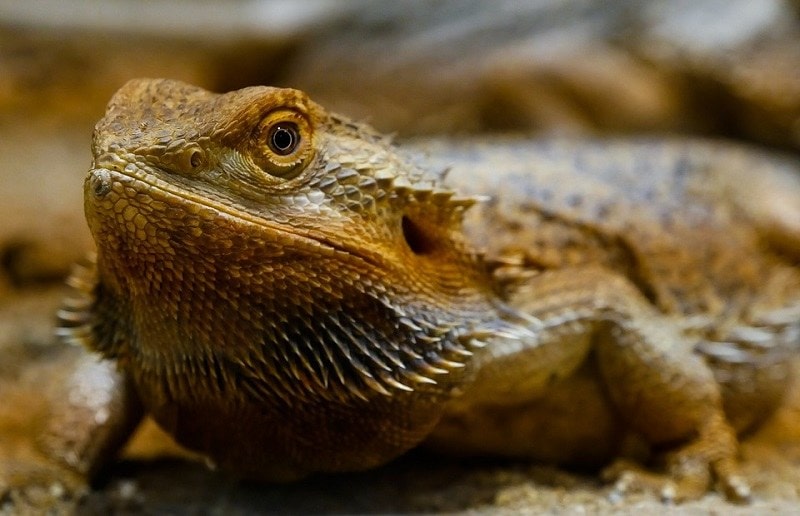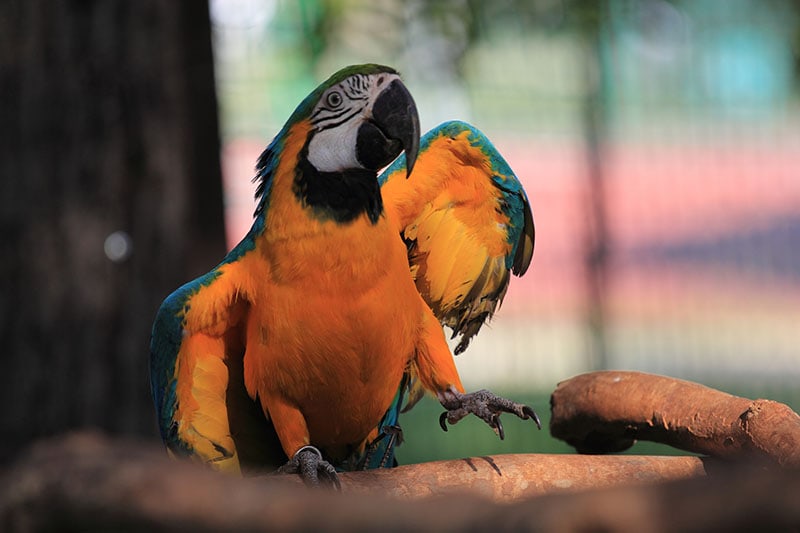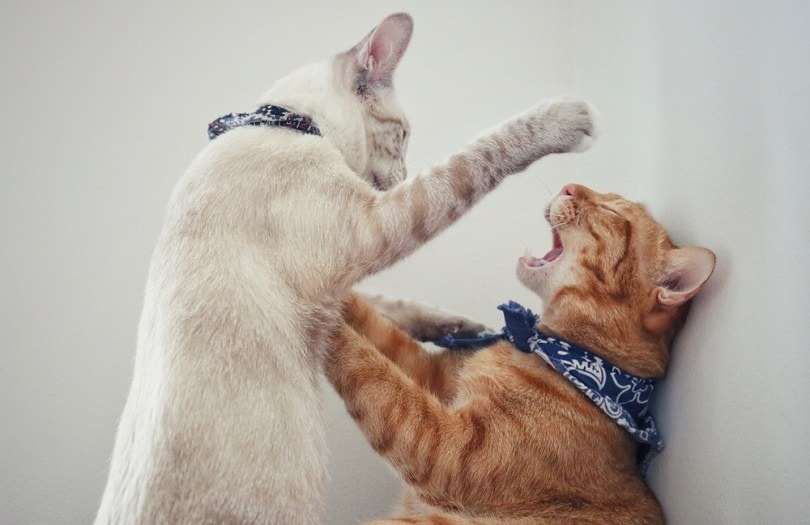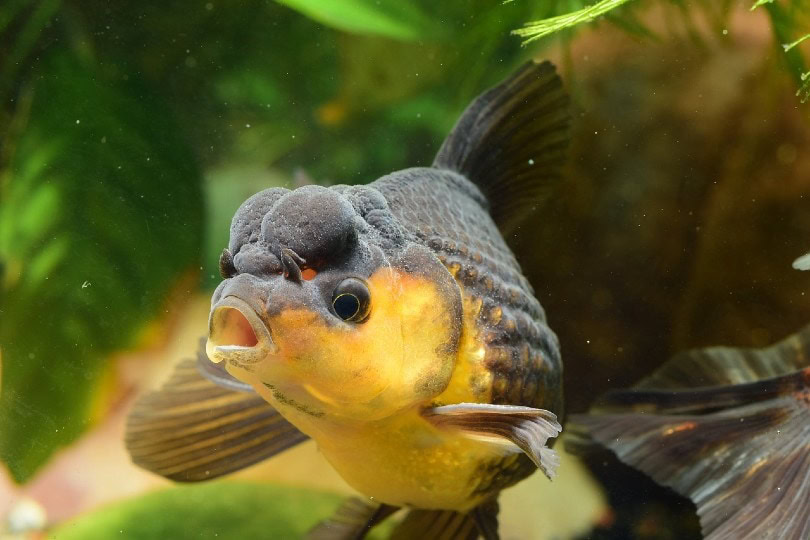Click to Skip Ahead
Bearded dragons are popular pets, and their popularity seems to grow with each passing year. This Australian lizard can grow to about 2 feet long, and their throat is covered in scales that it can raise at will to create a “beard.” It also exhibits several other strange behaviors, including head bobbing.
Here, we discuss why your bearded dragon bobs its head and what it might be trying to tell you.

The 4 Reasons Bearded Dragons Bob Their Head
1. Sign of Dominance
Bearded dragons are territorial animals,1 so if something wanders into one’s territory, especially a male coming near another male, it will need to assert its dominance. You are likely to see this behavior at home if you put a second bearded dragon in a habitat that already belongs to another. Besides the head bobbing, your beardie may also start to puff out its bears, which is a sure sign that it’s unhappy that an intruder is present. This behavior helps make it look bigger and more threatening.
2. Mating Season
Bearded Dragons will also bob their head to attract the attention of the opposite sex during mating season. This behavior is similar to that of many other species, where the male must put on a show or perform a mating ritual to win the female’s affection. Some experts think that it’s actually a form of exerting dominance over the female so she submits to mating. Similarly, the dragon moves its head up and down while puffing out its beard.
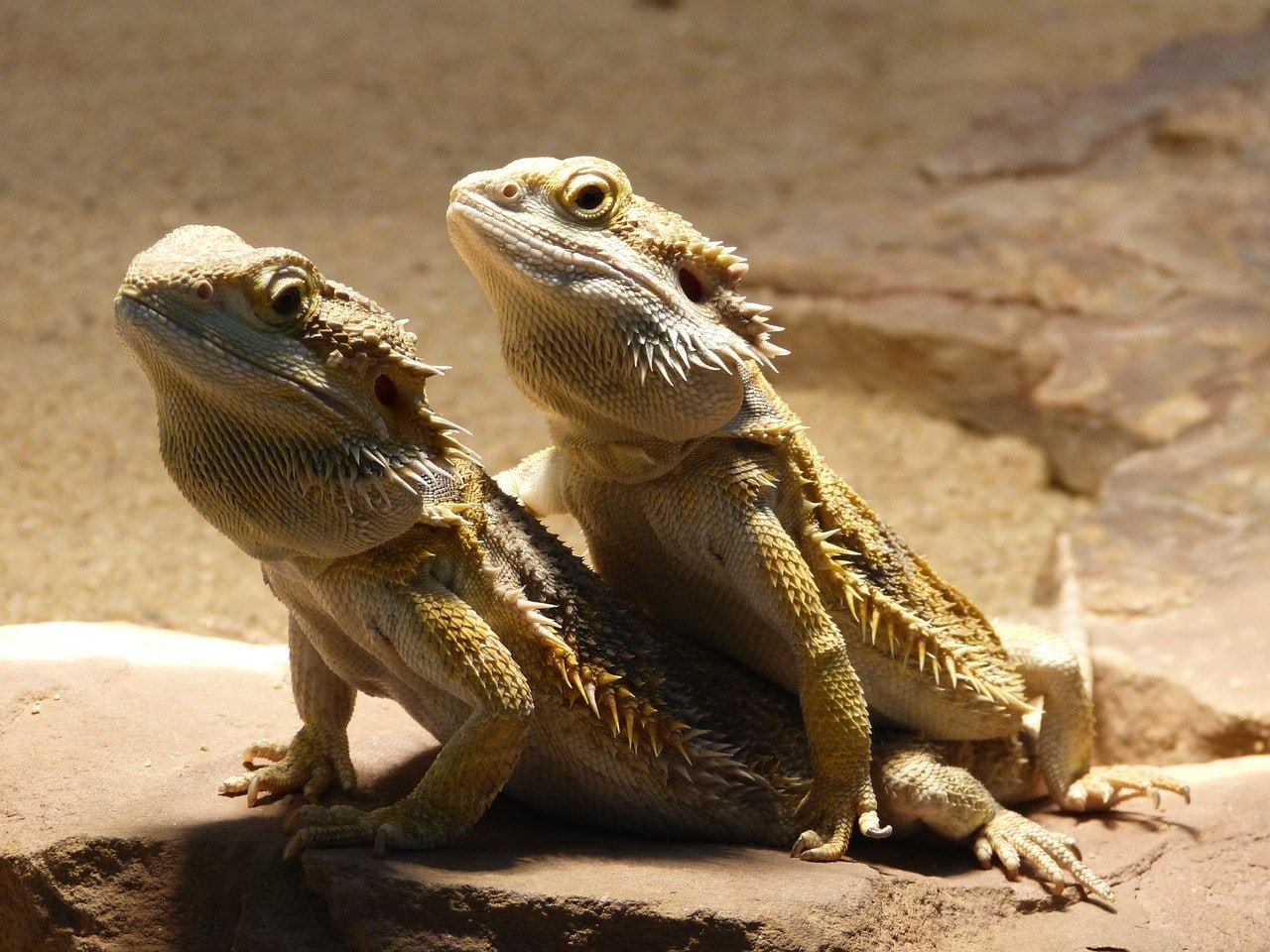
3. Sign of Submission
A bearded dragon that is bobbing its head quickly while puffing out its beard is showing dominance over intruders and females when mating, but if it’s bobbing their heads slowly, it is often a sign of being submissive. If one male is bobbing his head quickly and the other slowly, it’s a sign that the second recognizes the first as the boss, and hostilities should subside.
4. Depth Perception
Many animals, like the bearded dragon and the rabbit, have eyes set far apart on their heads. They may bob their heads up and down to determine how far away something is. An object farther away will not move as much as a closer object, which can help your pet get a better sense of its surroundings.
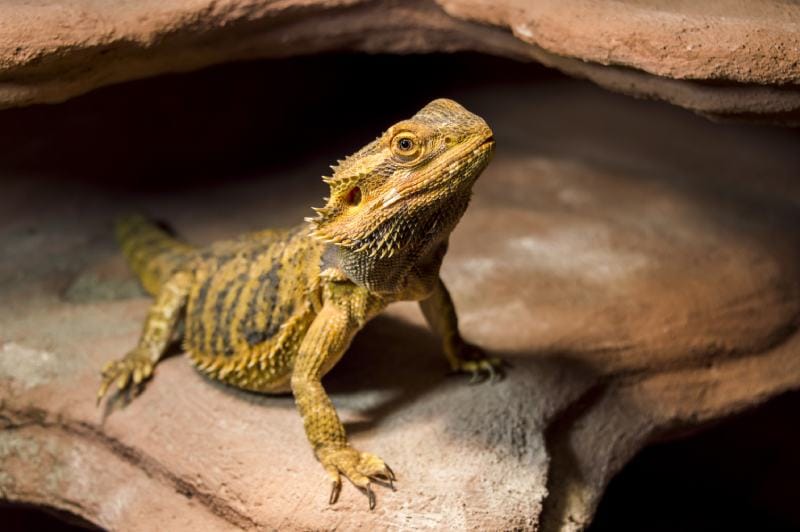

Frequently Asked Questions (FAQ)
Do Female Bearded Dragons Bob Their Heads?
Yes, while females bob their heads much less frequently than males, they will also bob their heads if feeling threatened. You might see a female bob her head if you add another dragon to the cage after she makes it her home and is comfortable living alone. She will also bob her head at a male during the mating ritual to show that she is receptive to his efforts.

Why Do Baby Bearded Dragons Bob Their Heads?
A baby bearded dragon, especially those kept as pets, will often bob its head to signal that it’s threatened or afraid. The head bobbing may be instinctual, as it’s trying to assert dominance over its unfamiliar surroundings. The action could also be an attempt by the small lizard to look larger than any perceived threat. This type of head-bobbing will often cease as the new pet adjusts to its habitat and begins to feel comfortable and in control.
If you notice your baby dragon exhibiting this behavior, give it plenty of space in a quiet area with food, water, and light. Don’t allow many people to handle your new pet at this early stage, and limit handling it yourself until you notice that the head bobbing stops. Once it relaxes, you can spend more time bonding with your new pet.
Why Does My Bearded Dragon Bob Its Head at Other Pets?
Your bearded dragon will bob its head at your other pets for the same reason that it bobs at other lizards. It’s usually happening because it sees them as a threat. It will see other pets as a threat if they are coming close to its terrarium or are making too much noise. Usually, keeping your dog or cat at a distance can minimize aggressive behavior.
Your bearded dragon may also be trying to determine how far away the pets are to determine if there is a present danger. On rare occasions, your dragon may see other pets as potential mates and could be bobbing to get their attention.

Why Does My Bearded Dragon Bob Its Head at Toys?
If you notice your bearded dragon bobbing its head at toys, it’s likely that your pet is mistaking it for a predator and is attempting to assert dominance over it. If the toy isn’t moving, it might be trying to determine distance so it can safely pass.
Why Does My Bearded Dragon Bob Its Head at Me?
A bearded dragon bobbing its head at its owner is not uncommon, and if the head is moving slowly, your pet is letting you know it sees you as the boss, but if it’s bobbing the head quickly, it’s trying to make you submissive. Spending more time bonding with your pet will eliminate its desire to become aggressive toward you, and the head-bobbing will cease.

Continuous Head Bobbing
In most cases, the head bobbing will cease after a short time. However, if it continues, you will need to locate and eliminate the source, as the high stress levels your pet is experiencing can cause health problems. The most common reason for continuous head bobbing is keeping two bearded dragons in the same cage. These animals often prefer a solitary life, and they may not cohabitate with one another peacefully. If you notice that the head bobbing continues for more than a day, it’s probably best to find another home for one of them and not try to force them to live together.
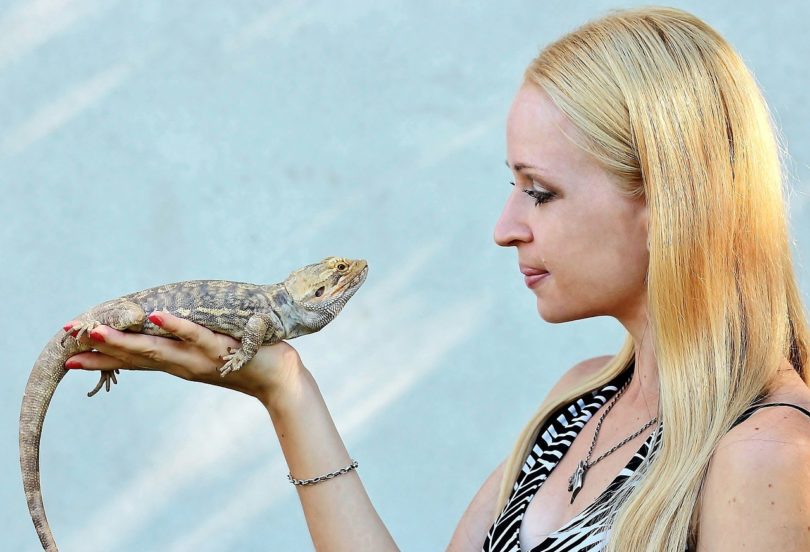

Summary
We hope you have enjoyed reading this short guide and have learned something new about your pet. The most likely reason your bearded dragon is bobbing its head is that it’s trying to assert its dominance over its surroundings, especially if you just brought it home or moved its cage into another room. It might also get nervous if it sees a dog running around nearby or hears loud noises. In most cases, the bobbing will stop after a short time as it becomes more comfortable in its surroundings. Sometimes it’s best to leave the room and eliminate the noise for a few hours to reduce the stress levels that your pet is experiencing.
- You may also like: How to Choose the Right Cage Size for Bearded Dragons
Featured Image Credit: Pixabay
